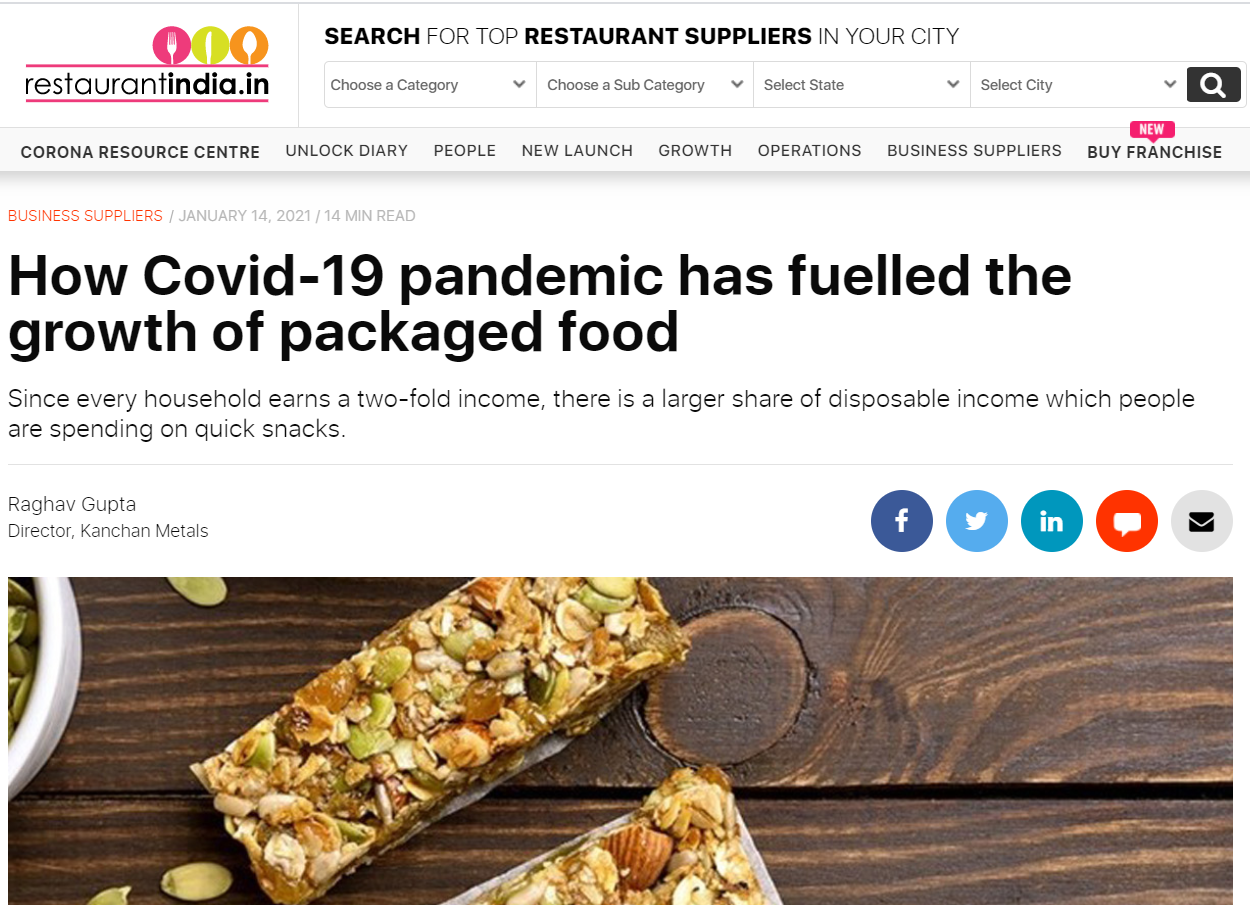One of the fastest growing economies in the world and a sourcing hub for agricultural products, India has the advantage of a huge domestic market and raw material. There has been a phenomenal growth in the size of the food processing market due to reasons of change in consumption patterns, increasing urbanization, alterations in the gender composition of the workforce, and rising consumption rates. In addition, over two-thirds of the country’s population is young with rising incomes which has in turn created a large market for food products.
There has been a significant development of the production, manufacturing, processing, distribution and marketing of food products. On top of this, diets and taste changes because of reasons such as prices, size of disposable income, individual preferences, globalization etc. This has fuelled the growth and acceptance of packaged/processed foods by Indian consumers.
Market Insights
A well-known fact is that many of the domestic and multinational companies are anticipating profits from the upwards trajectory of the confectionery industry in India. The Food and Beverage (F&B) services industry has been a thriving business sector with an exponential growth in the recent past and is poised to develop even more in the times to come. The food automation market is likely to hit $12.50 billion by 2027, a rise at the rate of 7.10 percent.
The Indian food processing segment is also undergoing a significant growth cycle with multinational companies cementing their position and presence within the Indian market. The robust macro-economic indicators and strong policies have led to an incredible increase in foreign investments and collaborations in the past few years. In the period between April 2000 and June 2017, the food processing industry in India received FDI to the tune of $7.81 billion, rendering it the 13th largest sector receiving FDI in the country.
The industry is expected to expand at a compound annual growth rate (CAGR) of 11.5% up to financial year 2023 to touch a value of Rs. 15,971.9 billion. Rising foreign investments and collaborations in the food processing segment of India signal an increase in the food and confectionery items that are being offered by global MNCs as well as domestic companies. The anticipated growth rate demonstrates that the segment has a massive growth potential and will go on to add to the development of the Indian economy.
Key Growth Drivers and Deterrents of the Industry
India is witnessing a rise in the population coupled with increasing urbanisation that has given a huge boost to the food industry. The fast-paced lifestyle and back-breaking schedules have made it difficult to maintain an adequate work-life balance for the consumer. As lifestyle diseases like hypertension, diabetes and heart ailments rise due to the sedentary lifestyle, people have started making the switch to healthy foods. Now consumers are steered towards demanding products that are highly nutritious and keep illnesses at bay, and they want these to be convenient to procure.
In light of these changing consumer patterns, responsible and ethical food processing is the need of the hour. Hence, packaged products like ready-to-eat foods, intermediary food items and frozen food items are fast gaining popularity. People working from home are especially raising the demand for confectionery items such as chocolates, raw pastes, and various such products. Due to the global health concerns surrounding COVID-19, the consumption of snacks has increased dramatically.
Since every household earns a two-fold income, there is a larger share of disposable income which people are spending on quick snacks. The new found mall culture and metropolitan lifestyles are further pushing higher-customer spending. In addition, the practice of farm to table is hitting the trending list. Millet cereal’s meal recipes are now making their way into imaginative cuisine. The largest development in the food industry is bulk food. Since they are known to be really good for health and cut down on carbohydrates removing gluten, their significance is increasing.
However, the industry does face certain hindrances to its growth. It suffers from low availability of raw materials as certain crops are seasonal and cause delay in the whole process. Farmers require the capital for equipment and fertilizers to improve the quality of their produce. In many cases, there is a lack of storage infrastructure, which results in food wastage and loss. There is poor connectivity of certain rural areas with locations where food processing units are situated. As a result, the producer takes a lot of time to reach these units, again leading to a lot of wastage. Lastly, there is a dire need to adopt technology as much of the product is inspected manually, and farmers lag behind in the competition with the global market.Franchise India,Restaurant India




